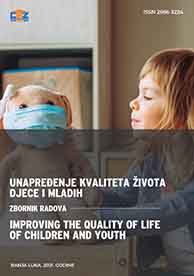FENOMENOLOŠKE KARAKTERISTIKE KRIMINALA MALOLETNIKA U REPUBLICI SRBIJI – PRETPOSTAVKA ZA USPEŠNU PREVENCIJU
PHENOMENOLOGICAL CHARACTERISTICS OF JUVENILE CRIME IN THE REPUBLIC OF SERBIA - A PREREQUISITE FOR SUCCESSFUL PREVENTION
Author(s): Ivana Radovanović, Danijela SpasićSubject(s): Social Sciences, Psychology, Sociology, Criminology, Studies in violence and power, Social Norms / Social Control
Published by: CENTAR MODERNIH ZNANJA
Keywords: juvenile crime; phenomenology; statistics; crime prevention;
Summary/Abstract: Juvenile delinquency undoubtedly and justifiably attracts a lot of attention from the scientific and professional public, both because of some of its basic characteristics and because of the consequences it can have. In addition to the fact that this is a population characterized by insufficient psycho-physical and social maturity, the special importance of studying juvenile delinquency stems from the fact that they are the youngest and most vulnerable members of society and that the way society responds to their behavior largely depends. their further development, as well as the development and future of the whole society. As crime prevention in general, and juvenile crime prevention in particular, is the most important segment in combating crime in a society, creating a realistic picture of its size and basic characteristics, as well as etiological factors is the starting point for planning and organizing preventive interventions and procedures. An important precondition for adequately designed preventive activities is certainly the determination of the phenomenological characteristics of this behavior, and as some authors quite rightly believe, the success of the undertaken preventive activities largely depends on the quality and analysis of collected data on this crime. An unavoidable source of these data are statistical records kept by various entities: from judicial bodies - police, prosecutors, courts, through records of social protection services, educational institutions, all the way to scientific research and higher education institutions that study this phenomenon. This paper analyzes the data on juvenile delinquency in the territory of the Republic of Serbia obtained on the basis of the records of the Republic Bureau of Statistics. The analysis refers to a period of 10 years. and includes data from 2010 to 2019. The aim of the paper was to analyze the distribution of forms of behavior that make up the definition of juvenile crime to get a reliable picture of its most important phenomenological characteristics, its frequency, structure by gender, type of crime, etc. as well as their changes during the observed period.
Journal: DRUŠTVENE DEVIJACIJE
- Issue Year: VI/2021
- Issue No: 6
- Page Range: 423-433
- Page Count: 11
- Language: Bosnian, Croatian, Serbian

